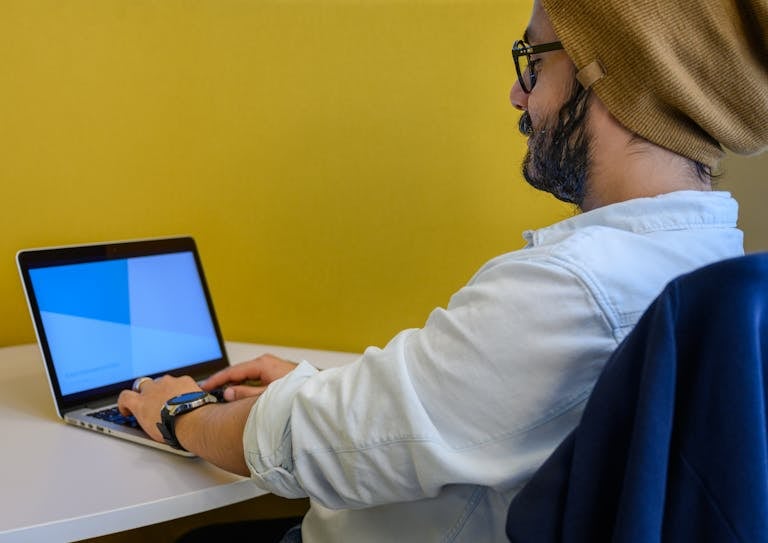Digital addiction has become a major concern in today’s technology-driven world. With the constant availability of smartphones, laptops, and social media platforms, it’s easy to get caught in a cycle of excessive screen time. This addiction can lead to various mental and physical health issues, such as anxiety, stress, and disrupted sleep patterns. However, overcoming digital addiction is possible by making small, intentional changes to your daily routine.
In this article, we’ll explore practical strategies to help you break free from digital addiction and regain control over your time and well-being. By implementing these strategies, you can create a healthier relationship with technology, allowing you to enjoy its benefits without letting it consume your life.

1. Recognize the Signs of Digital Addiction
The first step in overcoming digital addiction is to acknowledge that it’s a problem. Digital addiction can manifest in different ways, including:
- Constantly checking your phone: Feeling the need to check your device every few minutes, even without any notifications.
- Spending excessive time on social media: Losing track of time while scrolling through social media platforms and feeling a sense of dissatisfaction afterward.
- Neglecting personal relationships: Prioritizing screen time over spending quality time with friends, family, or colleagues.
- Feeling anxious or restless without your device: Experiencing discomfort or anxiety when you don’t have access to your phone or other digital devices.
If you recognize these signs in yourself, it’s time to take action to break free from digital addiction.
2. Set Clear Boundaries for Screen Time
One of the most effective ways to overcome digital addiction is to establish clear boundaries for your screen time. Setting limits will help you regain control over your usage and create a healthier balance. Here are some tips for managing your screen time:
a. Set Screen Time Limits
Use built-in features on your smartphone or apps like RescueTime or Moment to track and limit your screen time. These apps can help you monitor how much time you spend on your devices and set daily limits for specific apps or activities.
b. Designate Screen-Free Zones
Create areas in your home or workspace where screens are not allowed, such as the bedroom or dining room. By having designated spaces for relaxation or work, you can create a break from technology and focus on more meaningful activities.
c. Set Device-Free Times
Establish specific times throughout the day when you disconnect from your devices. This could include:
- No screens for an hour after waking up.
- Designating lunch or dinner as a screen-free time.
- Taking breaks during work hours to step away from your devices.
Having these boundaries will help you reclaim your time and reduce the temptation to check your phone or computer.
3. Engage in Offline Activities
One of the best ways to reduce digital addiction is to fill your time with offline activities that bring you joy and fulfillment. These activities will help you take your mind off screens and provide opportunities for personal growth. Some ideas include:
a. Exercise
Physical activity is a great way to improve both your physical and mental health. Whether it’s going for a run, practicing yoga, or taking a dance class, exercise helps you disconnect from your devices while boosting your mood and energy levels.
b. Read Books
Reading is a fantastic way to engage your mind and escape from the constant pull of screens. Choose books that interest you or explore new genres to expand your horizons. Setting aside time to read each day can help you reduce your screen time and improve your focus and cognitive function.
c. Spend Time Outdoors
Nature has a calming effect on the mind and body. Take time each day to step outside and enjoy the fresh air, whether it’s for a walk, hike, or simply sitting in a park. Nature helps you reconnect with the present moment and provides a break from technology.
d. Cultivate Hobbies
Engage in creative or productive hobbies that don’t involve screens, such as painting, gardening, cooking, or learning a musical instrument. These activities provide a sense of accomplishment and fulfillment while giving your mind a break from the digital world.
4. Be Mindful of Social Media Usage
Social media can be a major contributor to digital addiction. To reduce your screen time, it’s important to use social media mindfully. Here are a few tips to help you manage your usage:
- Set time limits: Use the screen time tracking tools mentioned earlier to limit the time you spend on social media platforms each day.
- Unfollow or mute accounts: Unfollow accounts that don’t bring value to your life or make you feel anxious or upset. You can also mute notifications for less important accounts.
- Curate your feed: Follow accounts that inspire or motivate you, and avoid those that contribute to negativity or comparison.
By being mindful of your social media habits, you can reduce your exposure to the constant stream of information and focus on more meaningful interactions.
5. Practice Digital Detox
A digital detox involves completely disconnecting from your devices for a set period of time. This break allows you to recharge and reset your relationship with technology. To practice a digital detox:
- Choose a day or weekend to unplug from all digital devices.
- Spend the day engaging in offline activities like reading, exercising, or spending time with loved ones.
- Reflect on how you feel during and after the detox. Use this time to evaluate your relationship with technology and make adjustments if necessary.
Q: How long should my digital detox last?
A: A digital detox can last anywhere from a few hours to a full day or weekend. Start with a short period of time and gradually extend it as you become more comfortable.
Q: Will I miss out on important updates during a digital detox?
A: While you may miss some updates, a digital detox helps you prioritize your well-being. You can always catch up on important information after the detox without feeling overwhelmed.
Start Reducing Your Screen Time Today
Take small steps to reduce your screen time and break free from digital addiction. Set boundaries, engage in offline activities, and prioritize your mental health for a more balanced and fulfilling life.

I’m EKBAL HOSSAIN MONDAL, the creator of SmartSolveTips.com — a blog dedicated to helping people improve productivity, avoid digital burnout, and live better online. With years of hands-on experience in self-development and digital wellness, I write practical tips and tools to help you stay focused and thrive in a fast-paced digital world.






